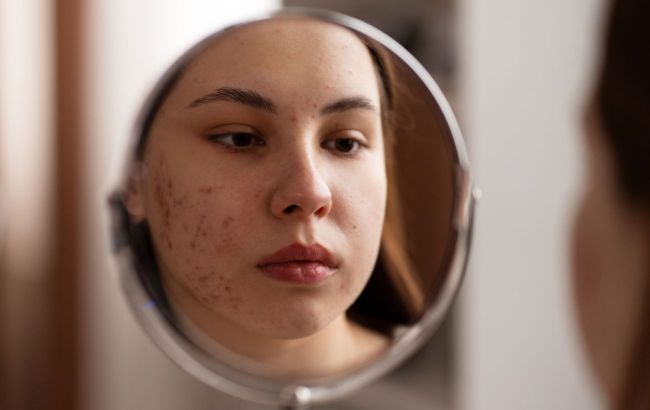Dermatologist reveals 5 common myths about acne
 What myths about acne you shouldn't believe (photo: Freepik)
What myths about acne you shouldn't believe (photo: Freepik)
Acne is a common skin condition that affects people of all ages. There are many myths surrounding this skin issue that are not worth believing.
What is acne?
Acne is a common skin condition that occurs when the follicles under the skin become clogged. Sebum, which prevents the skin from drying out, along with dead skin cells, blocks the pores, leading to outbreaks of lesions.
Skin eruptions most commonly occur on the face but can also appear on the back, chest, and shoulders.
Symptoms of acne include:
- Pustules filled with pus
- Small, colorless bumps, often ranging from red to purple
- Clogged pores with black tops
- Clogged pores with white tops
- Painful fluid-filled formations beneath the skin (pus-filled)
Acne can be mild, causing a few pimples, or moderate, resulting in inflammatory rashes.
5 myths about acne
Acne only occurs in teenagers
Many people think so, but it’s not true. According to dermatologist Valeria Ivchenko, acne is a condition that can occur in:
- Infants (up to 1 year)
- Teenagers (from age 12)
- Adults (over 30)
You need to wash your skin until it feels squeaky clean
People with acne often use soap and alcohol-based products to cleanse their skin. However, the doctor advises using products that are adapted to the needs of oily and problem skin. Alcohol and regular soap can dry out the skin. The more you use soap and alcohol-based toners, the more sebum your skin will produce.
The sun cures acne
This is a common myth, as the sun cannot heal this condition. UV rays have antibacterial effects and may temporarily improve skin condition. However, excessive sun exposure can lead to hyperkeratosis - increased oiliness, accumulation of dead skin cells, and worsening of skin condition.
Rashes in certain areas of the face can indicate problems with organs
It is important to remember that the skin is an independent organ and can have its own diseases. Therefore, it’s necessary to consult a specialist to address the issue rather than self-diagnosing.
Cleansing and peeling treatments cure acne
The dermatologist noted that cleansing and peeling should only be performed during remission to combat post-acne and reduce the number of comedones.
If inflammatory elements like papules, pustules, or cysts are present on the face, cleansing is contraindicated and can be harmful.
Tests that are unnecessary for acne
Demodex
Valeria Ivchenko states that there is no need to test for this and "search for mites."
"I can tell you right away, that they will be found 100% and that’s normal," the doctor added.
This parasite belongs to the conditionally pathogenic microflora and is found on the skin of 80% of healthy individuals. Its presence may be higher in cases of acne and rosacea, but it does not influence treatment tactics.
Helicobacter pylori
This bacterium does not cause skin inflammation and is not linked to rashes.
"If it helped someone you know, it’s only because Helicobacter is treated with antibiotics (just like acne)," Ivchenko wrote.
Toothpaste masks
Sometimes people make various masks with toothpaste based on recommendations from "experts" on the internet.
Toothpaste contains dyes and fragrances, which should already raise concerns. Additionally, propylene glycol in toothpaste can cause allergic reactions, redness, chemical burns, or swelling.
Earlier, we reported what foods can provoke acne and psoriasis.
Read also why sugar and milk cause acne.
Sources: National Institute and Skin Diseases, Cleveland Clinic, and the Instagram page of dermatologist Valeria Ivchenko.
This material is for informational purposes only and should not be used for medical diagnosis or self-treatment. Our goal is to provide readers with accurate information about symptoms, causes, and methods of detecting diseases. RBС-Ukraine is not responsible for any diagnoses that readers may make based on materials from the resource. We do not recommend self-treatment and advise consulting a doctor in case of any health concerns.

